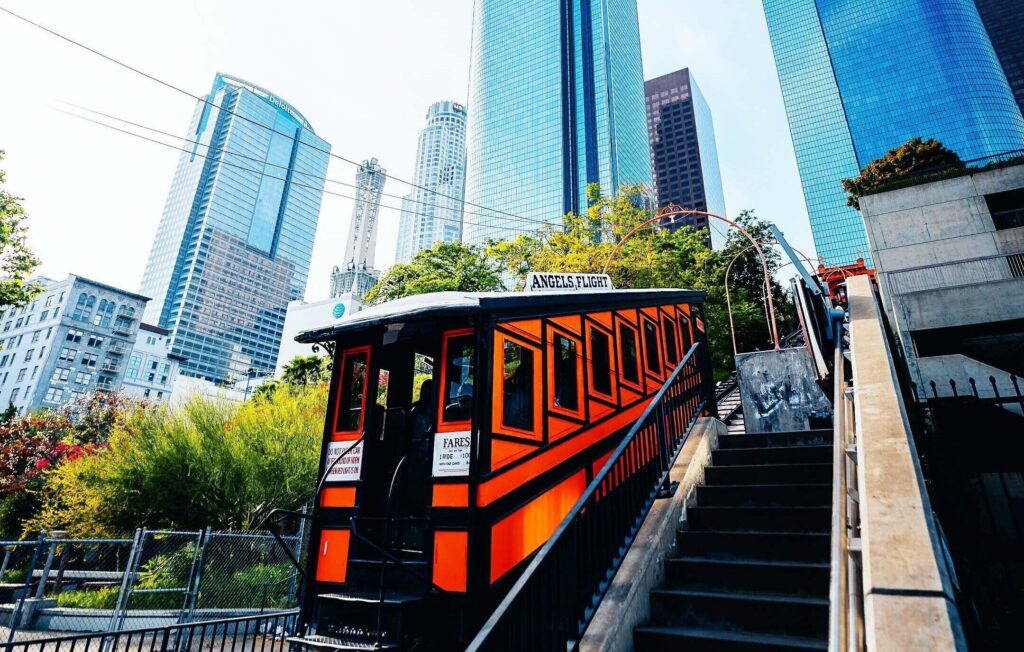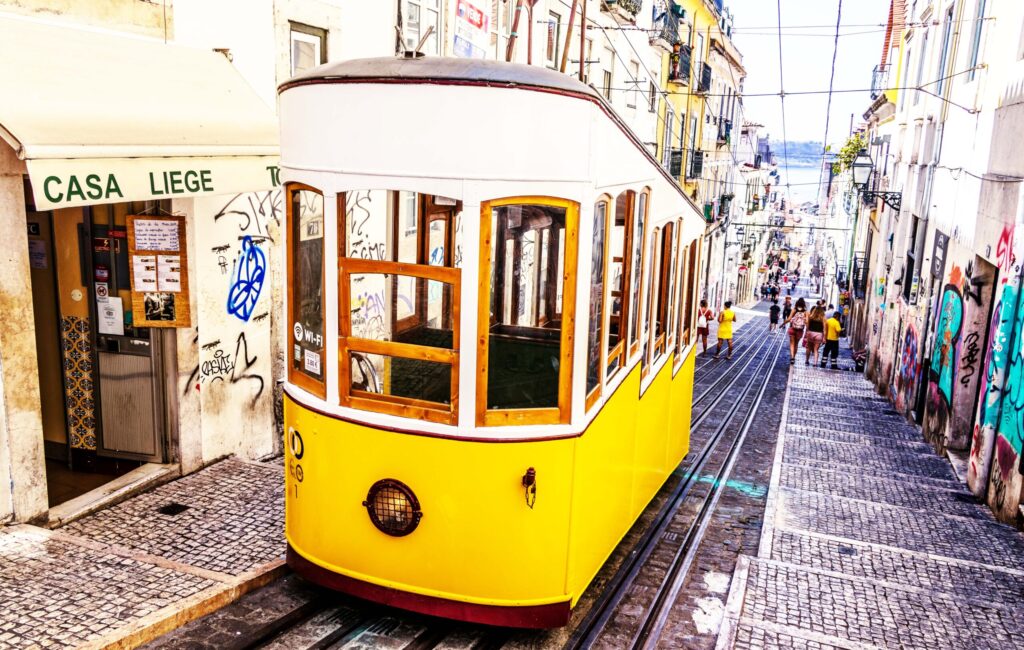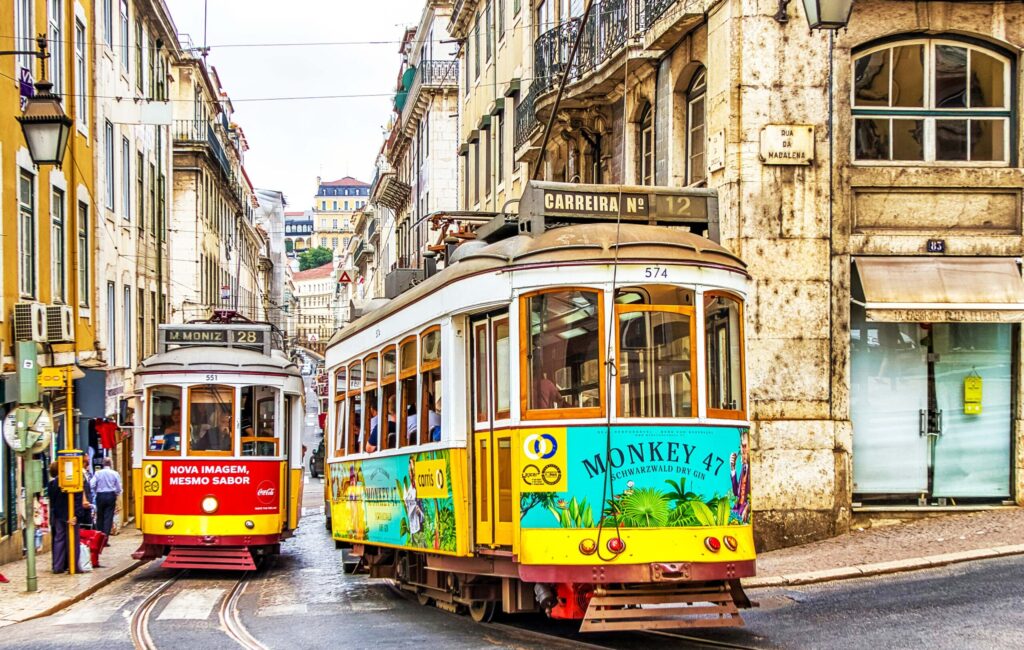Putting the “fun” in urban funiculars, from Lisbon’s Elevador da Glória to Barcelona’s Montjuïc Funicular…
In cities worldwide, integrating funiculars into urban landscapes has solved practical transportation challenges and added a unique charm to these locales. From the picturesque hills of Lisbon, where the Elevador da Glória offers panoramic views of the city, to the historic streets of Los Angeles, home to the iconic Angels Flight, these inclined railways have become integral to the character of their respective metropolises.
Barcelona’s Funicular de Montjuïc effortlessly connects the city to Montjuïc Hill, providing access to cultural attractions, while in Bergen, Norway, the Fløibanen funicular treats passengers to breathtaking views of the surrounding fjords.
Whether navigating steep gradients or facilitating access to elevated destinations, these cities showcase how funiculars conquer geographical challenges and enhance the urban experience with their scenic routes and historical significance.
Here are some cities with notable funiculars and why they are considered great:
 Lisbon, Portugal (Elevador da Glória):
Lisbon, Portugal (Elevador da Glória):
-
- Lisbon has several funiculars, including the Elevador da Glória, which connects downtown with the Bairro Alto district.
- Great for providing efficient transportation up the city’s hills, offering panoramic views of the city.
Barcelona, Spain (Funicular de Montjuïc):
-
- The Funicular de Montjuïc in Barcelona transports passengers from the city to Montjuïc hill.
- It’s great for accessing the Montjuïc Castle and the hill’s various cultural and recreational attractions.
Bergen, Norway (Fløibanen):
-
- The Fløibanen funicular takes visitors from Bergen city center to Mount Fløyen.
- It offers stunning city views and surrounding fjords, making it a popular tourist attraction.
Zurich, Switzerland (Polybahn):
-
- The Polybahn funicular connects the city center with the University of Zurich.
- Great for students and locals, providing a quick and scenic route between the two points.

Los Angeles, USA (Angels Flight):
-
- Angels Flight is a historic funicular in downtown Los Angeles, connecting Hill Street and California Plaza.
- It’s considered great for its historical significance, dating back to 1901, and its role in the city’s transportation history.
Rio de Janeiro, Brazil (Santa Teresa Tram):
-
- While not a traditional funicular, the Santa Teresa Tram operates on a steep incline, connecting downtown Rio with the Santa Teresa neighborhood.
- It’s great for its cultural and historical value, providing a unique experience for locals and visitors.
Funiculars are often praised for their ability to provide efficient and scenic transportation, especially in cities with challenging topography. They contribute to the character and charm of a town while offering practical solutions for navigating hilly terrain.

Did you know?
The Polybahn funicular in Zurich, Switzerland, connects the city center with the University of Zurich, offering students and locals a quick and picturesque route between academia and the bustling urban core.
In Rio de Janeiro, Brazil, the Santa Teresa Tram, although not a traditional funicular, winds through the historic streets, providing a culturally rich and unique experience as it connects downtown with the charming Santa Teresa neighborhood.
A little history:
Funiculars have a rich history that spans several centuries, and their development is closely tied to the need for efficient transportation in hilly or mountainous terrain. A funicular, derived from the Latin word “funiculus,” meaning “a small rope,” involves two cars connected by a cable running over a pulley, allowing them to move in opposite directions.

The earliest known funiculars date back to the 15th century, with the first documented one being the Reisszug in Salzburg, Austria, constructed in 1515 to transport goods to Hohensalzburg Castle. Over the years, funicular technology evolved, and by the 19th century, steam power and later electricity were harnessed to drive these inclined railways.
Funiculars became integral to urban transportation in cities with challenging topography, providing efficient and often scenic solutions for navigating steep gradients. Now, many historic funiculars continue to operate alongside modern counterparts, contributing to the unique character of cities worldwide.



